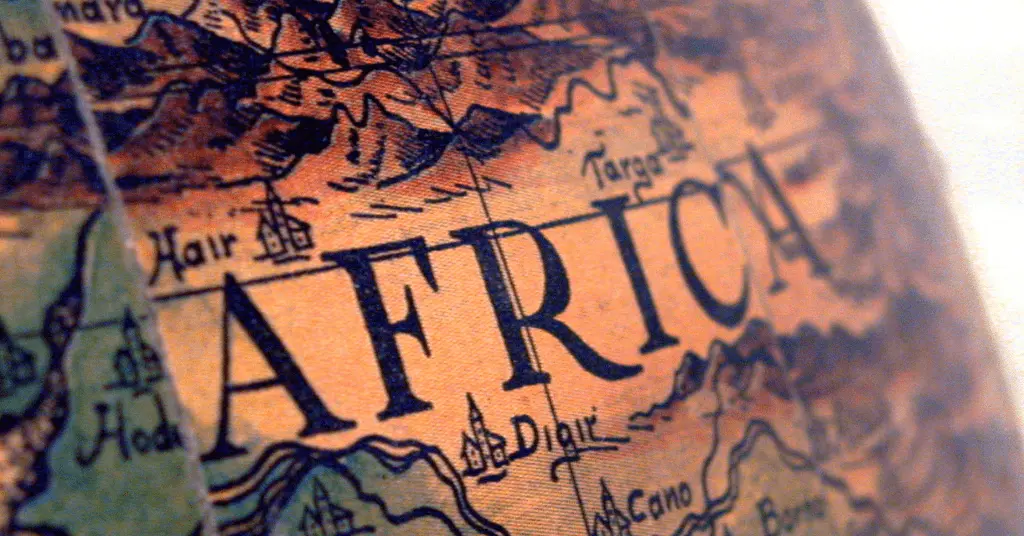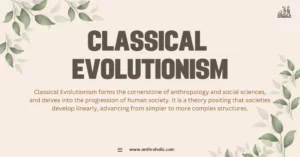AI Answer Evaluation Platform Live Now. Try Free Answer Evaluation Now
Out of Africa Theory
In-depth inquiries into the ancestry of Homo sapiens, or modern humans, have been done throughout history. One method is the “multi-regional hypothesis of human evolution”. According to this view, Homo erectus, our parent species, spread over the planet roughly a million years ago while Homo sapiens continued to grow. Owing to frequent genetic exchange, the same species has fragmented into a number of subspecies. Nonetheless, regional features have been retained to some degree, and it is hypothesized that they might even be present in current human societies.

The second viewpoint is known as the “Out of Africa” notion. This demonstrates that before spreading to other areas of the globe, Homo sapiens initially arrived in Africa between 100,000 and 200,000 years ago. Yet, both schools of thought maintained that everyone had some African heritage. But there is one key difference. On opposite extremes of the spectrum of the disagreement are the statements that our last common ancestor in Africa lived one million years ago and belonged to a distinct species, and that our African Adam and Eve lived much more recently and were also one of us.
Study variation in “Out of Africa” Theory
The study of the variations in human DNA has had a great influence on intellectual growth. The letters of the same DNA molecule should change at a fixed speed during the lifespan of the two groups of humans we are comparing. The largest genetic distance that may have happened between the two representative samples and their last common ancestor is examined to estimate how much change has occurred. If we know the time and the distance, we may simply calculate the time since divergence.
A hypothetical example could be useful. It is commonly acknowledged that when the same language is spoken in geographically separate regions, the spellings shift. One letter thus vanishes once every 100 years. It would therefore be reasonable to draw the conclusion that the two must have had an origin and that the original phrase was, maybe, “rabbit” because there are two important spellings for the same word, such as “lapbit” and “robbet”.
D. B. Goldstein, L. L. Cavalli-Sforza, and other researchers at Stanford University in California have made an attempt to solve the issue in a unique way by gathering data on so-called DNA microsatellites. These small DNA snippets frequently replicate themselves several times. The function of the “letters in the word” appears to be unaffected by their arrangement, which seems to drift randomly yet with the predicted clocklike regularity of anything that mutates as swiftly as it does.
Using a novel molecular distance technique, Goldstein and colleagues studied 30 microsatellites in 14 human populations and generated a tree of links. The tree’s stem, which divides all non-Africans from Africans, demonstrates that the previous sequence resembled present-day Africans more closely.
Based on the most current information on the rate of mutation in the microsatellites they investigated, the best estimate for the amount of time since the split between African and non-African populations, which happened 156,000 years ago, was created. The “Out of Africa” themes are now much more entrenched. The evidence verifies the “Out of Africa” concept, according to which all modern humans are sprang from a single population of Homo sapiens that left Africa 2,000 generations ago and expanded over a long amount of time across Eurasia. These intruders killed out the Neanderthals and other extinct species instead of mating with the early humans.
Researchers analyzed the Y chromosome and mitochondrial DNA of Australian aborigines and Melanesians from New Guinea. The unique genetic patterns linked with early humans were compared using this data. The success of the program, which was an international undertaking, featured key contributions from specialists from Stanford, Oxford, and Tartu in Estonia.The studies indicated that modern humans, who traveled out of Africa 50,000 years ago, share genetic traits with Melanesians and Aboriginal people.
In the past, the assumption that Australia had a varied population was used to fiercely dispute the “Out of Africa” myth. It has been established that the tool and bone pieces recovered there and those unearthed elsewhere along the “coastal highway,” the road traveled by the early immigrants into South Asia, differ greatly.
Some scholars think that either a later, secondary migration from Africa or early immigrants interacting with the local Homo erectus population led to these traits. These facts raise doubt on the assumption that contemporary humans share a similar genesis.
But the most recent investigations failed to identify any genetic evidence of a Homo erectus genetic origin, suggesting that the immigrants had a common progenitor and did not mingle with other Eurasian peoples.
Long Standing Debate in “Out of Africa” story
Although it has been difficult to establish, it has long been considered that the progenitors of present-day people in Australia and New Guinea were similar, according to the study’s lead author, geneticist Dr. Peter Forster. This research gives the first genetic confirmation of a common ancestor between New Guineans and Australian Aboriginals, who both arrived in Australia along the same voyage from Africa.
Australia and New Guinea were joined by a land bridge at the time of the migration, 50,000 years ago, and the area was only physically separated from the main Eurasian continent by minor gaps like Wallace’s Line in Indonesia. The land bridge was submerged 8,000 years ago.
Despite genetic data revealing no sign of interbreeding with Homo erectus, the new figures point to a unique Palaeolithic migratory experience and explain why the fossil and archaeological record in Australia is so different from that observed elsewhere.
Communities in Australia and Melanesia were genetically diverse throughout development depending on their genetic make-up. In addition, the two populations share a number of Melanesia-specific genetic traits. This would show that there was essentially no gene flow into Australia after the first exodus.
The research “speaks to relative isolation after the first arrival, which would indicate any significant changes in skeleton structure and tool use were not influenced by outside sources,” says Dr. Toomas Kivisild, a co-author from the Department of Biological Anthropology at Cambridge University and an author of the paper.
“There was likely some secondary gene flow into Australia while the land bridge from New Guinea was still in existence, but after it was submerged, the population probably stayed isolated for thousands of years.” The differences in the archaeological record were produced by this, not by any subsequent migrations or marriages. The study is published in the most recent issue of Proceedings of the National Academy of Sciences.
“Out of Africa” story with Australian archaeological data
The Australian archaeological data indicates a number of apparent variations from the “Out of Africa” story. For instance, the oldest Australian bones, from Lake Mungo, are quite tiny and gracile in appearance, despite the fact that more recent skeletal findings are a little bit more robust. Its longevity, as proved, for example, by the brow ridge structure of present Aboriginal people, suggests that either Homo sapiens and Homo erectus interbred or that there were many migrations into Australia followed by interbreeding.
In Australia, there was a notable spike in the number and sophistication of stone tool types over the Holocene period (which started around 10,000 years ago), notably when back-blade stone technology appeared. The first people and dingoes are supposed to have arrived on the continent at the same epoch. Debates about a hypothetical migration in the future and the notion of a single starting location have been impacted by this.




